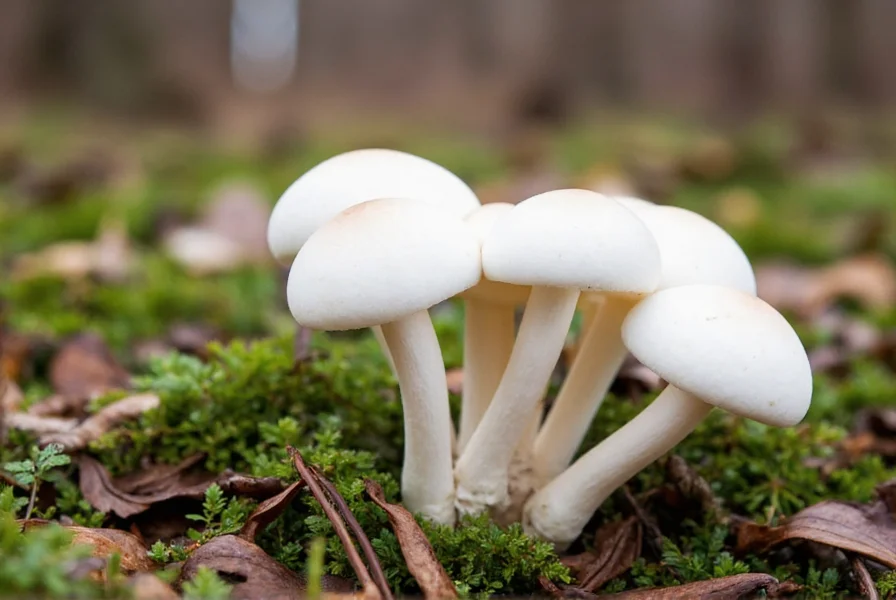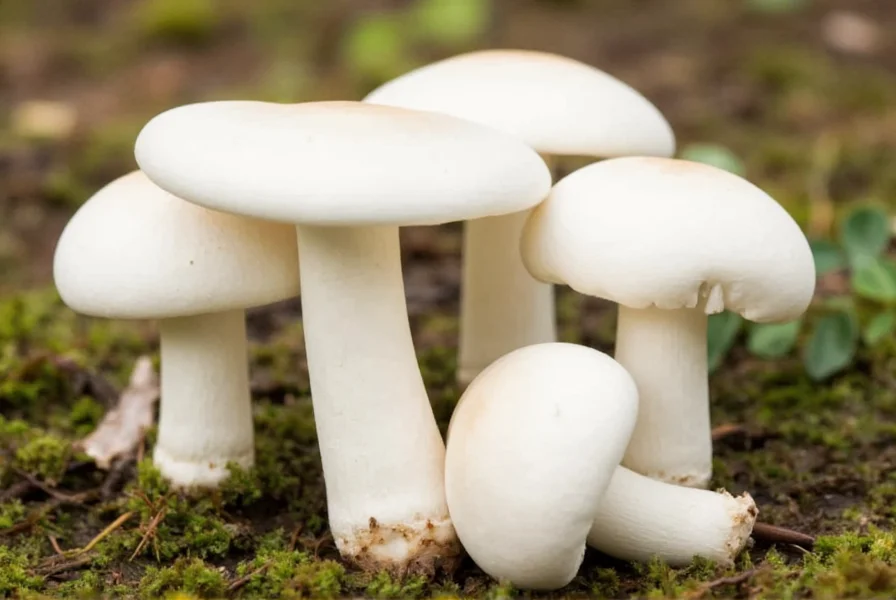When you encounter white mushrooms at your local grocery store or farmers market, you're most likely looking at Agaricus bisporus in its immature form—commonly known as button mushrooms. These versatile fungi represent approximately 90% of mushrooms consumed globally and serve as the culinary foundation for countless dishes across various cuisines.
Understanding White Mushroom Varieties
While "white mushroom" commonly refers to button mushrooms, the term encompasses several related varieties that share similar growing conditions and nutritional profiles:
| Variety | Characteristics | Common Uses |
|---|---|---|
| Button Mushroom | Smooth white cap, mild flavor, firm texture | Raw salads, sautéing, stuffing, pizza toppings |
| Cremini | Brownish cap, deeper flavor than button mushrooms | Sauces, soups, roasting, grilling |
| Portobello | Large mature caps, meaty texture, robust flavor | Grilling, burgers, stuffing, roasting |
It's crucial to understand that not all white mushrooms are safe to eat. While commercially cultivated varieties undergo strict safety protocols, wild white mushrooms require expert identification. The death cap mushroom (Amanita phalloides), one of the world's most poisonous fungi, often appears white during early growth stages.
Nutritional Benefits of White Button Mushrooms
White button mushrooms deliver impressive nutritional value despite their delicate appearance. A 100g serving provides:
- Approximately 22 calories
- 3g of protein
- Significant selenium, potassium, and B vitamins
- Dietary fiber supporting digestive health
- Natural antioxidants including ergothioneine
Recent research published in the Journal of Agricultural and Food Chemistry confirms that white mushrooms contain compounds that may support immune function and provide anti-inflammatory benefits. When preparing white mushrooms for cooking, avoid soaking them in water as they absorb moisture readily—instead, use a damp cloth for cleaning.
Safety Considerations for White Mushroom Consumption
Understanding the difference between commercially grown and wild white mushrooms is essential for safe consumption. Grocery store white mushrooms safety guidelines include:
- Always purchase from reputable sources with proper food safety certifications
- Check for firm texture and absence of dark spots or sliminess
- Store in paper bags in the refrigerator (not plastic containers)
- Cook thoroughly to eliminate potential bacteria
For those interested in identifying white mushrooms in the wild, we strongly recommend consulting with certified mycologists rather than relying on online resources. Many poisonous species closely resemble edible varieties, and misidentification can have severe consequences.

Culinary Applications and Preparation Tips
White mushrooms offer remarkable versatility in the kitchen. Professional chefs recommend these techniques for cooking with white mushrooms:
- Dry sauté first: Cook mushrooms without oil initially to release moisture, then add fat for browning
- Season late: Salt draws out moisture—add after mushrooms have browned
- Pair with complementary flavors: Garlic, thyme, rosemary, and sherry enhance mushroom flavor profiles
- Preserve texture: Avoid overcrowding the pan to ensure proper caramelization
For beginners exploring white mushroom recipes for beginners, simple preparations like garlic sautéed mushrooms or mushroom risotto provide excellent starting points. These dishes highlight the mushroom's natural umami flavor while building fundamental cooking skills.
Growing White Mushrooms at Home
Home cultivation of button mushrooms has become increasingly accessible. Successful growing white mushrooms indoors requires:
- Temperature control between 55-65°F (13-18°C)
- High humidity environment (85-95%)
- Proper substrate (composted manure or specialized mushroom kits)
- Avoiding direct sunlight while providing indirect light for pinning
Commercial mushroom farms maintain strict environmental controls that can be challenging to replicate at home. For those interested in white mushroom cultivation basics, starter kits provide the most reliable results for beginners.

Common Misconceptions About White Mushrooms
Several persistent myths surround white mushrooms that deserve clarification:
- Misconception: All white mushrooms are safe to eat
Reality: Color alone cannot determine edibility—many poisonous species appear white - Misconception: Raw white mushrooms are dangerous
Reality: Commercially grown varieties are safe raw, though cooking enhances digestibility - Misconception: White mushrooms lack nutritional value
Reality: They provide significant vitamins, minerals, and beneficial compounds
Frequently Asked Questions
Are all white mushrooms edible?
No, not all white mushrooms are edible. While commercially cultivated button mushrooms (Agaricus bisporus) are safe, many poisonous species including the death cap mushroom appear white during certain growth stages. Never consume wild mushrooms without expert identification.
What's the difference between white mushrooms and button mushrooms?
White mushrooms and button mushrooms refer to the same variety - Agaricus bisporus in its immature stage. 'Button mushroom' describes the small, round, white form commonly found in grocery stores, while 'white mushroom' is a more general term that can sometimes include other varieties.
How should I store white mushrooms properly?
Store white mushrooms in a paper bag in the refrigerator's main compartment (not the crisper drawer). Avoid plastic containers which trap moisture and accelerate spoilage. Properly stored, they should remain fresh for 5-7 days.
Can you eat white mushrooms raw?
Yes, commercially grown white button mushrooms are safe to eat raw. However, cooking improves digestibility and enhances certain nutritional benefits. Raw mushrooms contain small amounts of agaritine, which reduces with cooking, though levels in cultivated varieties are considered safe for consumption.
Why do my white mushrooms get slimy quickly?
White mushrooms become slimy when stored in conditions with excessive moisture. Always store them in paper bags rather than plastic containers, and avoid washing until ready to use. High humidity environments accelerate spoilage, so proper ventilation is essential.











 浙公网安备
33010002000092号
浙公网安备
33010002000092号 浙B2-20120091-4
浙B2-20120091-4